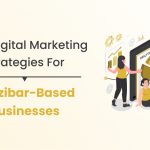Is your site mobile friendly? 2016 marks the first year that mobile traffic exceeds desktop traffic, yet many organizations have still ignored to take mobile devices into account. Their sites aren’t improved for mobile search, and basically don’t look good on phones and tablets. Not just does this cause disappointed customers to keep the website, it’s a large problem for your SEO as well. Google revealed “mobilegeddon” which punishes sites that aren’t mobile-friendly, and declared that mobile-friendliness is now one of their most significant ranking signals. How do you know if your website is mobile friendly? The first thing is to check Google’s Mobile-Friendly Test device. Enter your website URL, and Google will let you know if your website is mobile-friendly. If you want to succeed at mobile SEO, Here are five areas must look at.
Mobile Site Types: There are three kinds of mobile sites like responsive, dynamic serving, and parallel mobile web site. Selecting the right model from the get-go is the most significant choice you can make regarding your mobile website.
- Responsive Website: Responsive Web Design is a strategy that allows you to show the actual same web page, with the same web page code, but the site conforms based on the size of the display. Web sites like Starbucks, The Next Web, Mashable, Boston Globe and drive Me Safely use responsive design and style. Many companies choose a responsive website for its comfort, lower price, quick turnaround and the easier maintenance. This strategy is suggested by Google. The drawbacks are, the less difference for mobile UX, and it is harder to apply to big-scale web systems.
- Parallel Mobile Website: a parallel mobile website is an individual version of your website created particularly for mobile users. At several sites utilizing parallel mobile website are Home Depot, eBay and other sites. Making a separate mobile site will allow you to provide the best customized mobile expertise for users without in your PC website. This is most appropriate for large-scale sites. Even so, it may twice the cost of execution and maintenance. And it takes innovative SEO expertise to deal with the complexes of backlinks and content between web and mobile editions with proper redirects.
- Dynamic Serving Website: In a dynamic serving site, the web server detects and serves a custom page that match up the visitor’s device in the same URL. At several sites that use this method are CNN, Zillow, and Mico Equipment. This procedure provides a better custom mobile experience and uses the same URL for the web and mobile. Even so, it entails innovative technical expertise and price to structure, apply effects, and maintain. It can also confuse customers who observe different content on the same web page.
Mobile Content: User involvement has a big impact on search engine ranking, so improving content for mobile experience is very significant. This includes news, copy, images & videos and call to actions. This is important if you are using responsive sites. In responsive design, the same web page content is used on both web and mobile displays. So you should make your web copy with both web and mobile expertise in thoughts, to ensure the content can connect successfully with customers on across multiple screens.
- Write brief news that expresses your core message
- Summarize your key factors on the best of each article
- Break up content into small sections for easy consumption
- Use mobile-friendly images: Don’t let mobile users obtain huge pictures that are designed for larger screens.
Mobile Speed: Regardless of the kind of your mobile site, it is critical to improve for mobile loading speed. Nowadays, Google is viewing loading speed as an important ranking factor. Slow Speed will affect user experience greatly.
Mobile SERP Display: In mobile, the SERP real estate is precious and the competition for clicks is intense. Due to the image scenery of mobile devices, only the top two Google results will be at the above in SERPs. Moreover, Google often shows maps, algorithmic solutions to queries, or related applications below the first result. Improving your SERP results using relevant rich snippets and cards can help you obtain a competitive edge and get more user attention and clicks.
 seolounge
seolounge



